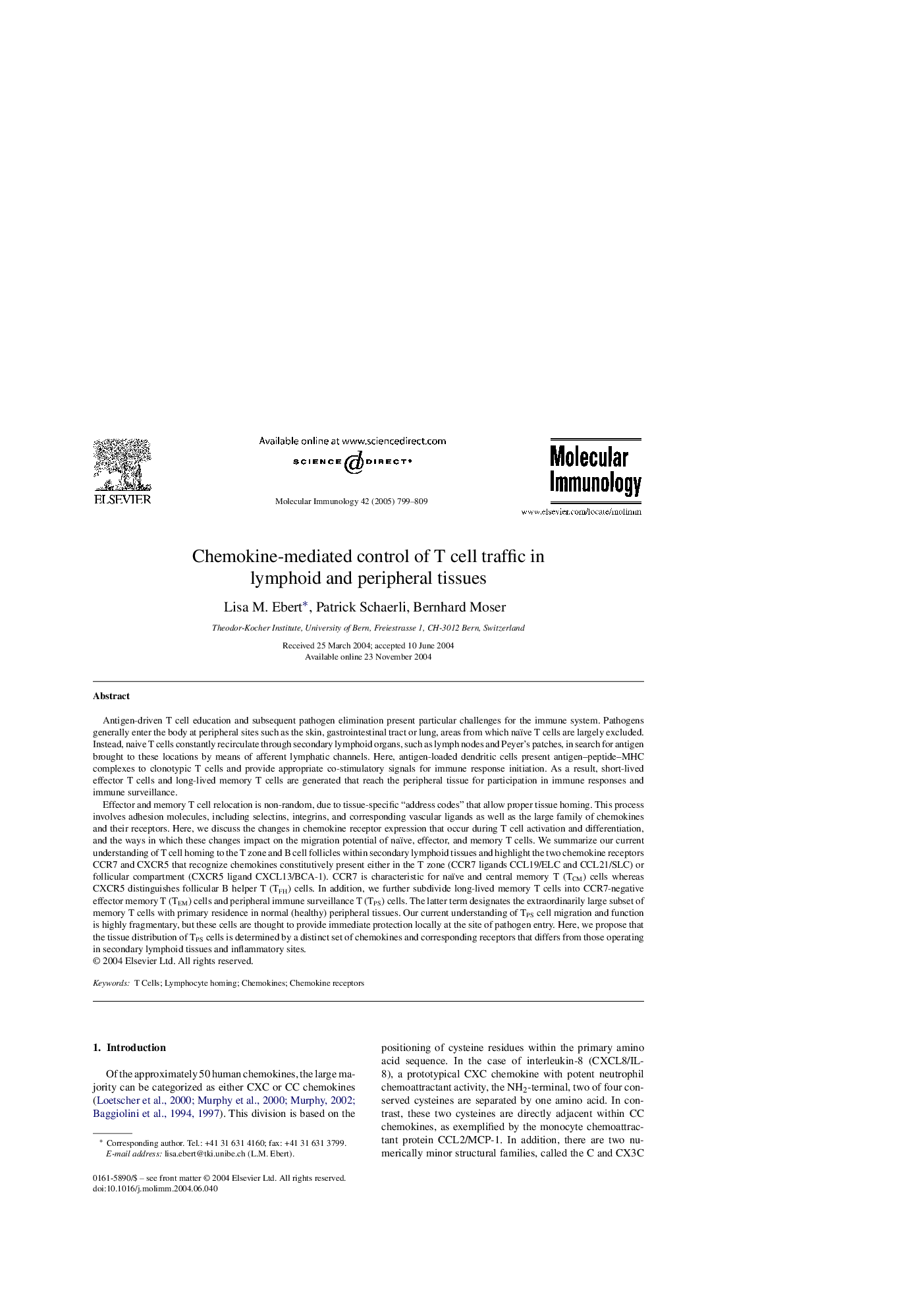| Article ID | Journal | Published Year | Pages | File Type |
|---|---|---|---|---|
| 9141877 | Molecular Immunology | 2005 | 11 Pages |
Abstract
Effector and memory T cell relocation is non-random, due to tissue-specific “address codes” that allow proper tissue homing. This process involves adhesion molecules, including selectins, integrins, and corresponding vascular ligands as well as the large family of chemokines and their receptors. Here, we discuss the changes in chemokine receptor expression that occur during T cell activation and differentiation, and the ways in which these changes impact on the migration potential of naïve, effector, and memory T cells. We summarize our current understanding of T cell homing to the T zone and B cell follicles within secondary lymphoid tissues and highlight the two chemokine receptors CCR7 and CXCR5 that recognize chemokines constitutively present either in the T zone (CCR7 ligands CCL19/ELC and CCL21/SLC) or follicular compartment (CXCR5 ligand CXCL13/BCA-1). CCR7 is characteristic for naïve and central memory T (TCM) cells whereas CXCR5 distinguishes follicular B helper T (TFH) cells. In addition, we further subdivide long-lived memory T cells into CCR7-negative effector memory T (TEM) cells and peripheral immune surveillance T (TPS) cells. The latter term designates the extraordinarily large subset of memory T cells with primary residence in normal (healthy) peripheral tissues. Our current understanding of TPS cell migration and function is highly fragmentary, but these cells are thought to provide immediate protection locally at the site of pathogen entry. Here, we propose that the tissue distribution of TPS cells is determined by a distinct set of chemokines and corresponding receptors that differs from those operating in secondary lymphoid tissues and inflammatory sites.
Related Topics
Life Sciences
Biochemistry, Genetics and Molecular Biology
Molecular Biology
Authors
Lisa M. Ebert, Patrick Schaerli, Bernhard Moser,
